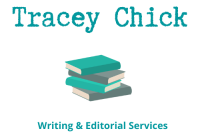Read on to find out about some simple techniques you can employ to help deepen your writing.
Share in your favourite places!

As writers, we know there is a ton of information out there on the bigger picture elements of telling a story eg when to introduce plot points, what POV to use, what tense to write in etc and of course this advice is invaluable. But there is very little written about the finer detailed parts of a narrative that, when mixed together, deepen your writing to create a novel that has you turning the pages long past your bedtime.
“If we want to write, it makes sense to read—and to read like a writer. If we wanted to grow roses, we would want to visit rose gardens and try to see them the way that a rose gardener would.”
Francine Prose from Reading Like a Writer
I wondered for a long time if I was the only writer who wanted to break down my writing like this. Then I stumbled across two old blog posts hidden in the deepest darkest corners of the internet-one by the hugely successful historical fiction writer Bernard Cornwell, and the other by American author and editor C.S Lakin. I also discovered a great ebook DECONSTRUCTING GENRE NOVELS TO UNCOVER THE NECESSARY ELEMENTS by Beth Daniels.
All three authors advocate taking novels apart to see in detail, how they are constructed. Beth Daniels goes further and says the books should be recently published as markets shift over time and what worked twenty years ago may not be relevant now.
TIP This will work best if you deconstruct novels from the genre you write in. What makes a crime novel successful will differ to a romance novel for example.
Now of course this is far from easy. Not only is it a hugely time-consuming task, it also takes a great deal of thought. You have to read like a writer. But it works. Because by doing so, you gain a feel for what makes a balanced narrative, one where all the strands are woven in seamlessly to create a satisfying reader experience.

You can choose how far you want to drill down in this exercise. All of the authors make slightly different suggestions about what to focus on so I came up with the following list based on what I wanted to get out of the process:
- Background information (exposition)
- Flashback
- Setting-sensory description- touch, taste, smell, sight, sound, ‘feel’
- Setting-physical description-size of buildings, layout of roads, colour of trees etc
- Character description
- Character’s inner-world,thoughts, emotions
- Action
- Dialogue
TIP Before you start this exercise, think about what you hope to gain from it and make your own list.
Both Cornwell and Lakin suggest using a chart to collate the information. Take a very large piece of paper and divide into your chosen headings. Divide the book into chapters (or paragraphs if you want to go deeper) and make short notes in each column by asking yourself questions such as What is the balance of action and description? How much dialogue is there? Using different colours for each will make this easier. When finished, this will create what Cornwell refers to as a blueprint for your work.
Looking at a book in this way will help you see what it is about the book you think works and on the flipside what doesn’t work if there are elements you think aren’t quite right.
This process has benefitted me greatly. I tend to underwrite my drafts and have to go back and add more detail. I don’t always find it easy to see what’s missing and this helps me greatly in my quest to deepen my writing.
TIP If you don’t have time to do a whole book in one go, you could begin by doing a few chapters. This will still give you an idea of how the process works.
An alternative to the chart system is to use Beth Daniel’s method of marking up the text with different colour markers for the different headings and then analysing the information out in a separate notebook. Again you can focus on the headings which will help address your own writing gaps.
Whichever method you choose, it will be well worth the time investment and effort taken to do it, to help deepen your writing and keep your reader there with you.
Good luck!

Tracey Chick is a line and copyeditor specialising in historical fiction and narrative nonfiction.
She is a member of the Chartered Institute of Editing and Proofreading.
Visit her business website at Tracey Chick , connect on Twitter at @WriterTjc, LinkedIn and Facebook
Share in your favourite places!
